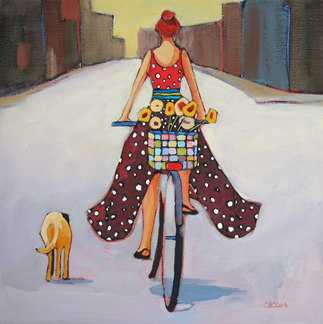Don't you love when "meteorologists" (i.e., newscasters who have been taught how to read weather reports off teleprompters) tell us that an approaching storm is "bringing" or "bringing with it" x number of inches of snow or rain.
The storm that first came this way the other day was supposed to turn into a blizzard in the wee hours of yesterday morning, "bringing with it" two, or even three, feet of snow.
What the storm--Winter Storm Juno, the first winter storm to have a name-- actually did was to drop about six inches of snow. That's more than the average storm in this area, but still nothing that would bring the city to a standstill--and certainly a lot less than was forecast.
I think this bike brought more snow with it than the storm brought:
The storm that first came this way the other day was supposed to turn into a blizzard in the wee hours of yesterday morning, "bringing with it" two, or even three, feet of snow.
What the storm--Winter Storm Juno, the first winter storm to have a name-- actually did was to drop about six inches of snow. That's more than the average storm in this area, but still nothing that would bring the city to a standstill--and certainly a lot less than was forecast.
I think this bike brought more snow with it than the storm brought:












